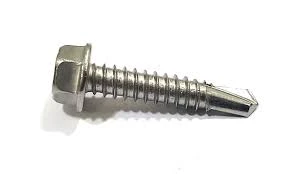Exploring the Benefits of Double Sided Threaded Studs in Various Applications
Understanding Double-Sided Threaded Studs Applications and Advantages
Double-sided threaded studs are essential components in various engineering and manufacturing applications, serving pivotal roles in fastening and assembly processes. These specialized fasteners are designed with threads on both ends, allowing them to be used for a range of tasks, including securing materials together, creating tension, and providing stability in constructions. In this article, we will explore the various applications of double-sided threaded studs, their advantages, and factors to consider when selecting the right stud for specific tasks.
Applications of Double-Sided Threaded Studs
1. Construction Industry In the construction industry, double-sided threaded studs are frequently used to secure structural elements together. For instance, they can be found in heavy frameworks and scaffolding systems, where their ability to hold tension plays a crucial role in ensuring stability and safety.
2. Automotive Manufacturing The automotive sector often utilizes double-sided threaded studs for assembling various components, such as engine mounts and transmission parts. Their strength and reliability are essential for maintaining the integrity of complex automotive structures subjected to rigorous mechanical stress.
3. Aerospace Engineering In aerospace applications, every component must meet strict safety standards. Double-sided threaded studs ensure robust connections in aircraft assemblies, including fuselage structures and engine components. Their lightweight nature coupled with high tensile strength makes them ideal for this industry.
4. Furniture and Electrical Appliances Double-sided threaded studs are used in the assembly of furniture and various electronic devices. They provide effective attachment points for different materials, facilitating easy disassembly and reassembly, which is particularly advantageous in manufacturing and maintenance processes.
5. Mechanical Engineering Many mechanical systems employ double-sided threaded studs for mounting and securing delicate instruments. Their versatility allows for adaptation in various mechanical configurations, ensuring that machinery operates smoothly and reliably.
Advantages of Double-Sided Threaded Studs
1. Versatility One of the most significant advantages of double-sided threaded studs is their versatility. They can be used in multiple applications and with various materials, making them a staple in numerous industries.
2. Time-Efficiency Utilizing double-sided threaded studs streamlines the assembly process. Since these studs can secure two components at once, they reduce the number of individual fasteners needed, saving time during installation and enhancing efficiency.
double sided threaded stud

3. Strong Connections With threads on both ends, double-sided threaded studs provide a strong and reliable connection. This feature ensures that joints can withstand significant stress and forces, which is critical for safety and durability in construction and manufacturing.
4. Easier Adjustability They offer a means for easily adjusting the tension between connected components. This adjustability is essential in applications where dimensional changes due to environmental factors (like temperature and humidity) can affect the stability of the assembly.
5. Cost-Effectiveness By reducing the number of fasteners needed and enhancing the ease of assembly, double-sided threaded studs can lead to significant cost savings in manufacturing and maintenance processes.
Selecting the Right Double-Sided Threaded Stud
When choosing the appropriate double-sided threaded stud for specific applications, several factors must be considered
- Material The choice of material, such as stainless steel, carbon steel, or specialized alloys, impacts strength, weight, and corrosion resistance.
- Thread Size and Pitch Different applications may require specific thread sizes and pitches. Proper matching ensures optimal performance and compatibility with other components.
- Length The length of the stud must be chosen based on the thickness of the materials being joined. An excessively long or short stud can compromise the integrity of the assembly.
- Coating and Finish Depending on the environment, protective coatings may be required to enhance corrosion resistance or aesthetics.
In conclusion, double-sided threaded studs serve as indispensable elements in numerous industries due to their versatility, strength, and efficiency. Understanding their applications and advantages can greatly aid in selecting the right stud for any project, ensuring successful and reliable fastening solutions. As technology advances, these fasteners will continue to evolve, further enhancing their role in engineering and manufacturing processes.
-
Weatherproof Plastic Expansion Anchors for OutdoorNewsJun.06,2025
-
Sustainability in the Supply Chain: Eco-Friendly TEK Screws ProductionNewsJun.06,2025
-
Load-Bearing Capacity of External Insulation FixingsNewsJun.06,2025
-
Double Head Bolts: Enhancing Efficiency in Industrial MachineryNewsJun.06,2025
-
Corrosion Resistance in Chipboard Screws: Coatings for Wholesale DurabilityNewsJun.06,2025
-
Butterfly Toggle Bolts : Enhancing Structural ResilienceNewsJun.06,2025
